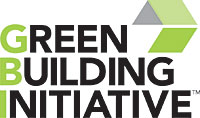Sustainability Rating Systems: Promoting Best Practices and Energy Efficiency
The Evaluation Process
In the U.S., Green Globesâ„¢ modules are available for new construction and renovation projects. The system is based on a series of questionnaires that relate to seven areas of assessment: project management, site, energy, water, resources, emissions/effluents and other impacts, and indoor environment.
Depending on the building, users work through up to eight project delivery modules that correspond to project phases, from pre-design, schematic design, construction documents, construction, and commissioning. Although evaluation can occur at any time, the system is designed to facilitate planning by providing detailed reports at two key stages, schematic design and construction documents.
At the schematic design stage, which often corresponds with planning approval, the system generates a preliminary score and suggests changes (where applicable) that will improve the building's performance and ultimate rating.
A final score is provided at the construction documents stage, which usually corresponds with building permit approval.
Both evaluation documents are written in plain language, to facilitate communications among the design team and owners or developers, contractors, future occupants, and others. These evaluations allow municipal authorities to verify that environmental claims are met as the project proceeds.
The data submitted must be substantiated by a third-party verifier, typically a licensed engineer, architect or building science expert, trained in the Green Globesâ„¢ system, before a final rating is given.
The verification process is completed in two phases. Once the construction documents questionnaire is complete, it is verified against the documentation generated throughout the design process, including construction specifications, working drawings, evidence of energy and life cycle modeling, and support materials, such as waste management plans. This phase results in a conditional assessment. Final verification occurs post-construction and includes an on-site inspection by the third-party verifier.
Once an assessment is verified by a qualified third party, projects achieving a score of 35 percent or more receive a Green Globesâ„¢ rating based on the percent of total points achieved.
|
|||||||||||||||||||||||||||||||











